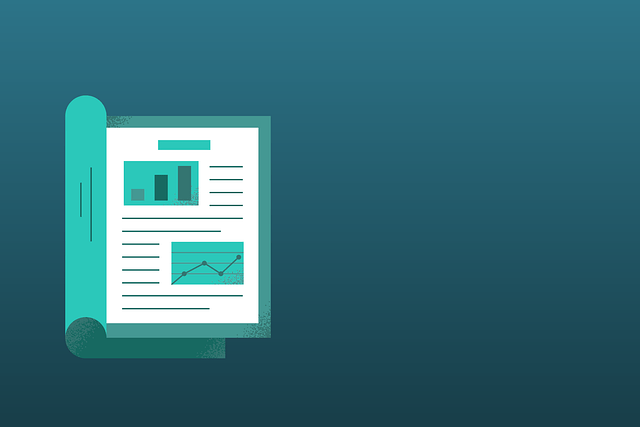Debt consolidation combines multiple debts into one single loan. It lets you focus on a single monthly payment rather than juggling several. This method aims to simplify your payment process, potentially lowering the interest rate and monthly payment amount.
There are several advantages to consolidating debt. It can lead to lower interest rates, which translates to saving money over time. By having a single payment schedule, it’s easier to manage your finances and reduce the chance of missing a payment. Simplified payments also help decrease stress about dealing with multiple creditors.
However, there are common misconceptions about debt consolidation that need addressing. Some think it’s a magic fix for financial problems, but it requires discipline and a solid repayment plan. Another myth is that it will damage your credit score. In reality, if managed well, it can help improve your score by making your payment history look more consistent. It’s about understanding the real benefits and being aware of the misconceptions.
Here’s a little transparency: Our website contains affiliate links. This means if you click and make a purchase, we may receive a small commission. Don’t worry, there’s no extra cost to you. It’s a simple way you can support our mission to bring you quality content.”
Contents
- 1 Assessing Your Current Financial Situation
- 2 Interactive Debt Snapshot Calculator
- 3 Step-by-Step Process for Debt Consolidation
- 4 Common Challenges and How to Overcome Them
- 5 A Hard Lesson Learned: Lauren’s Debt Consolidation Setback
- 6 “Financial Red Flags” Checklist
- 7 Managing Your Finances Post-Consolidation
Assessing Your Current Financial Situation
Before diving into debt consolidation, it’s crucial to get a clear picture of your financial landscape. Start by evaluating the total amount of debt you owe. This includes credit card balances, personal loans, medical bills, and any other outstanding debts.
Understanding the interest rates and terms associated with each debt is also essential. Different debts come with different interest rates and repayment terms, which can significantly impact your overall financial health. Make a comprehensive list, noting the balance, interest rate, and monthly payment for each.
Consider if debt consolidation is really the best move for you. While it has many advantages, it isn’t always the right fit for everyone. Evaluate your spending habits and financial discipline. If you continue to accumulate debt after consolidation, you may end up in a worse position than before.
Examine your credit score as well. Lenders will use this to determine your eligibility for a consolidation loan and the interest rate they’ll offer. A higher credit score means better loan terms, while a lower score might limit your options. If your credit score needs improvement, take steps to boost it before applying.
Interactive Debt Snapshot Calculator
Enter the details for up to five debts below. Click “Calculate” to see a quick snapshot of your total debt, average APR, and estimated monthly interest.
| Debt Name | Balance ($) | APR (%) | Months Left (Approx.) |
|---|---|---|---|
Lastly, have an honest discussion with yourself about your ability to commit to the necessary changes. Consolidating debt isn’t just about getting a single payment; it’s about adopting healthier financial habits to ensure you don’t end up in the same situation again.
Step-by-Step Process for Debt Consolidation
Begin by gathering all necessary documents and financial information. This typically includes your credit report, income statements, a list of all your debts, and any other relevant financial records. Having everything organized will streamline the application process.
Next, research and choose the debt consolidation method that suits your needs best. There are several options, including personal loans, balance transfer credit cards, home equity loans, and debt management plans. Each has its own set of benefits and drawbacks, so it’s essential to find one that aligns with your financial situation and goals.
Once you’ve selected a method, follow the procedural steps specific to that option. For a personal loan, this might involve filling out a loan application, providing the required documentation, and waiting for approval. With a balance transfer credit card, you’d apply for the card and transfer your balances once approved. Each path will have its own unique steps.
Being meticulous during the application process cannot be overstated. Double-check all the information you provide to ensure accuracy. Errors or missing information can delay approval or even result in a rejection.
Finally, if your application is approved, make sure you understand all the terms and conditions before signing any agreement. Pay close attention to interest rates, repayment terms, and any fees associated with the loan or credit card. Once everything is clear, proceed with the consolidation to combine your multiple debts into one manageable payment.
Common Challenges and How to Overcome Them
One common challenge in the debt consolidation process is getting approved for a loan. Approval can be difficult if you have a low credit score or inconsistent income. Lenders use these factors to assess your risk level, so having a poor credit history can be a significant hurdle.

To improve your chances of approval, work on boosting your credit score. Pay down existing debts, avoid opening new lines of credit, and ensure all your payments are on time. Sometimes, consolidating smaller debts first can help gradually improve your score.
Consider seeking help from a credit counselor. These professionals can offer personalized advice and potentially negotiate with creditors on your behalf. They can guide you through creating a debt management plan tailored to your needs.
Another obstacle might be finding the right debt consolidation method. Each method has its own requirements and limitations. Personal loans may need a good credit score, while balance transfer credit cards often come with promotional terms that expire. Research these options thoroughly and seek professional advice if needed.
If you’re not approved for a consolidation loan, don’t be discouraged. Look into alternative solutions like debt management plans or negotiation with creditors for lower interest rates or adjusted repayment terms. Persistence and patience are key to finding a workable solution.
A Hard Lesson Learned: Lauren’s Debt Consolidation Setback
Consolidating debts into a single payment can be a relief—until underlying spending habits remain unaddressed. Lauren’s journey is a cautionary tale that many can relate to, underscoring the fact that consolidation isn’t a “fix-all” solution. Here’s what happened:
Lauren’s Story
- What She Did: Lauren consolidated $5,000 in credit card balances onto a 0% APR balance transfer card. Initially, the single monthly payment made her feel more in control.
- Where It Went Wrong: She continued to use the old credit cards for discretionary spending, racking up an additional $3,000 in just a year. By the time the 0% intro rate expired, she was facing higher interest rates than before.
- Key Lesson: “Consolidation only helps if you change your financial habits,” Lauren admitted. Without adjusting her spending, she found herself in a deeper hole once the promotional period ended.
Why This Matters
- Consolidation ≠ Cure-All: Simply rolling debt into one place doesn’t address the root causes of overspending.
- Avoid the “Free Money” Mindset: A zero-percent intro rate can lull you into thinking there’s no financial consequence to continued credit card use.
- Focus on Behavior Changes: A realistic budget, careful tracking of expenses, and consistently paying down balances are essential to truly benefiting from consolidation.
Lauren’s experience reminds us that discipline and a shift in money habits are non-negotiable. If you opt for consolidation but don’t manage your daily spending, you can end up worse off than when you started.
“Financial Red Flags” Checklist
Debt consolidation alone isn’t a magic wand for financial problems. Watch out for these warning signs—if they apply to you, it may be best to address them (and possibly seek professional help) before pursuing consolidation:
- No Emergency Fund
Living paycheck to paycheck without any savings buffer. A single unexpected bill could force you back into high-interest debt. - Ongoing Overspending
Consistently spending more than you earn each month. This pattern can quickly undo any benefits of consolidation. - Missed or Late Payments
Struggling to cover bills on time. This often leads to penalties and a declining credit score, making future loans more expensive. - Maxing Out Credit Cards
Frequently hitting your card limit or resorting to one card to pay off another. This behavior indicates deeper issues with spending. - Lack of Budgeting System
Operating day-to-day without a clear plan for managing income and expenses. If you don’t track your money, overspending becomes the norm. - Ignoring High Interest
Accepting double-digit APRs on existing debt when cheaper alternatives might be available. Not exploring lower-rate solutions keeps you stuck in a cost spiral.
If you recognize multiple red flags from this list, take a step back and focus on resolving them—through diligent budgeting, building an emergency fund, or seeking the guidance of a financial counselor. Tackling these foundational issues first will make any future debt consolidation strategy far more effective and sustainable.
Managing Your Finances Post-Consolidation
After consolidating your debt, it’s vital to stay on top of your finances to avoid falling back into the same situation. Start by creating and sticking to a budget. List your income sources and monthly expenses, including your new consolidated payment. This will help you allocate funds efficiently and avoid overspending.
Next, prioritize building an emergency fund. Unexpected expenses can arise at any time, and having a financial cushion will prevent you from relying on credit cards or loans. Aim to save at least three to six months’ worth of living expenses.
Maintaining good financial habits is crucial. Avoid taking on new debt and focus on paying off your consolidated loan. If you find it challenging to manage your spending, consider using cash for discretionary purchases or setting up automatic payments to ensure you stick to your budget.
Monitor your credit report regularly to track your progress and spot any discrepancies. A steady improvement in your credit score can open up better financial opportunities in the future.
Leverage the benefits of your consolidated loan to achieve financial stability. Use this time to educate yourself further on personal finance, explore investment opportunities, and plan for long-term goals. The aim is not just to manage debt but to build a financially secure future.


This post is incredibly insightful! It clearly explains how debt consolidation can simplify managing multiple debts by combining them into one payment, reducing stress and potentially lowering interest rates. Understanding the common misconceptions is also essential for making informed choices. I’d love to discuss further: what strategies have worked for others after consolidating their debts? Sharing experiences could provide valuable tips for those considering this option!
Thanks for the nice words, Cyril! I’m really happy to hear you found the post helpful. Debt consolidation can definitely make managing finances a lot easier.
When it comes to strategies that have worked for others post-consolidation, a lot of folks have had success by putting together a budget that reflects their new payment plan. This way, they can keep themselves on track and steer clear of old spending habits. Some have also found it useful to set up automatic payments to dodge missed payments and late fees.
A good question to think about is: How can you stay motivated while paying off debt after consolidation?